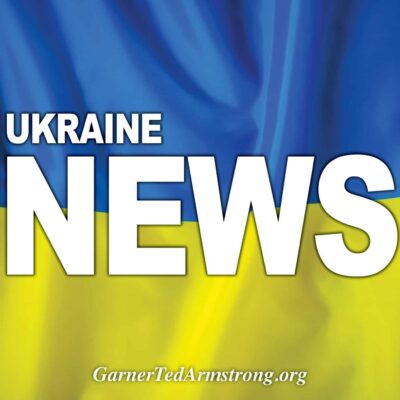
In the forests and plains of the Champagne-Ardenne region, where the great powers once clashed, the French armed forces begin to prepare for the return of a great conflict. Scheduled for 2023, Exercise Orion is a large division-level exercise that will last several days and probably based on the Suippes, Mailly, and Mourmelon camps. It will involve the entire French military capability on a scale that has not been tested in decades. The drill will include exercises in command posts, hybrid scenarios, simulations, and exercises with live fire. Some 10,000 soldiers could be involved, as well as the air force and, in a separate maritime sequence, the navy. Belgian, British, and American forces may join.
Orion Exercise
all French military capabilities will be involved on a scale that has not been tested in decades
There are other signs that the French armed forces are in the midst of a generational transformation. In January, the General Staff quietly created ten task forces to examine the country’s readiness for a high-intensity war. French generals consider they have a decade or so to adapt. The groups span everything from ammunition shortages to societal resilience, including whether citizens are “prepared to accept a level of casualties that we have never seen since WWII,” says one participant. The specter of high-level warfare is already so widespread in French military thought that the scene has its own acronym: HEM, or “major engagement hypothesis.” The presumed adversaries are not identified, but analysts point not only to Russia, but also to Turkey or a country in North Africa.

Changes in French military strategy. –
That represents a radical change for the French forces. Thirty years ago they were basically engaged in peacekeeping operations. In the last decade, they focused on the fight against insurgency and terrorism, either abroad (Operation Barján in the Sahel) or in the national territory (Operation Sentinel). However, in his strategic vision for 2030 published last year, General Thierry Burkhard, head of the French army, underscored the need to prepare for a high-intensity, interstate conflict.
Thierry Burkhard
The French army chief stresses the need to prepare for a high-intensity conflict, interstate
“We have to prepare for a more dangerous world,” General Burkhard recently told The Economist. This requires what he calls a “hardening” of the army. At present, France maintains 5,100 soldiers in the Sahel as part of Barjan. Future operations “could involve several brigades or a division”, that is, between 8,000 and 25,000 soldiers. The need to change scale in the next decade, says the general, calls for a combination of reforms: more demanding recruitment, investment in modern equipment, simpler organizational structures to make the military more agile, and tougher training for a major conflict. “We will be tested more and more brutally,” he says. “We have to face it.”

A French soldier during a cyber defense exercise. –
When Emmanuel Macron was elected president in 2017, some doubts were raised within the military about his commitment to military spending. After imposing a series of short-term cuts, he had with General Pierre de Villiers, then head of the Joint Chiefs of Staff, a public discussion that led to the resignation of the military. Since then, however, Macron has kept his campaign promise to invest heavily in his soldiers.
The defense budget for the period 2019-2025 received a big boost; annual spending will reach € 50 billion by the end of the period, at which point it will be 46% higher than in 2018. Favored in recent years, the budget allows military planners to think ahead, buy material and reorganize. “This is the first time that a reasonable fit between planning documents and the allocated budget has been remembered,” says François Heisbourg of the Foundation for Strategic Research. And it also allows France to now fulfill its commitment to NATO to spend at least 2% of its GDP on defense.

The belongings of French soldiers in a bedroom in a barrack in southern France –
The core of French military modernization is the Scorpion program, a € 6 billion project to replace virtually all the army’s front-line motorized and armored vehicles, upgrade the Leclerc tank from the 1990s, and connect them all through a new digital network. The idea is that a first fully equipped Scorpion brigade will be ready in 2023. Rémy Hémez, a French officer and researcher, says that, in the 15 years between 2010 and 2025, the army’s equipment will have changed more than in the four decades between 1970 and 2010.
On going
In many respects, France’s approach to the war of the future differs from the technological vision recently put forward by Britain. While Great Britain is cutting soldiers and armor, France maintains a number of soldiers that exceeds 60% of those planned by Great Britain, and 50% more tanks. France has been relatively slow in acquiring and assembling drones. “There is a great risk of being left behind as battlefield automation accelerates,” warned a report by the Montaigne Institute, a think-tank. In fact, French officers tend to be more skeptical than the British or American of the technological transformation of the battlefield. “Technology is never 100% effective,” warns General Burkhard. “Soldiers must always be able to fight in a degraded way … when the technology no longer works.”
This does not mean that France is dedicated to ignoring the new areas of war; space, in particular, is a priority. In September last year, the French air forces became the Air and Space Force following the creation of a new military space command in Toulouse. The French armed forces are also expanding their capabilities in computer and cyber warfare. In December 2020, Facebook and Instagram removed a network of 100 bogus accounts linked to the French armed forces after a clash with other Russian-backed accounts in relation to the Central African Republic and Mali, among other African battlefields in which both countries are vying for influence.
However, as France begins to prepare its armed forces for all these new forms of warfare, there are also a number of major challenges. The experience in the Sahel, says General Burkhard, is “an undeniable strength.” In a vast area of semi-arid scrubland, soldiers and special forces engage in high-risk combat operations that are both technically and tactically challenging. The French military has reported 57 deaths since 2013. However, Barján is a highly asymmetric conflict in which the French enjoy air supremacy, without interference in communications or threats from drones, missiles or cyberattacks.
The other problem is that the French forces are being pulled in several directions at the same time. In mid-March, a dozen French tanks, 160 armored vehicles and 300 soldiers reached Tapa in Estonia. They are the latest French contribution to NATO battle groups deployed in Poland and the Baltic countries to act as a deterrent against a Russian attack. In fact, military personnel take it for granted that future clashes will take place alongside other allied countries; if not with NATO, at least with the United States or a coalition of willing countries. Modernization efforts are consistent with NATO priorities and also with Macron’s expressed desire that Europe strengthen its indigenous defenses; Although it is true that France and other countries continue to depend on the support of the United States in fundamental capacities, such as air transport and air defense.
In addition to eastern Europe, France is increasingly concerned about the south. In the eastern Mediterranean, France and Turkey have clashed over Libya, Syria, and Cyprus, with Macron sending two warplanes and a frigate to Greek waters last August. In addition, France is heavily involved in the Indo-Pacific, a region in which its overseas territories have 1.6 million French citizens and 7,000 soldiers. France has maintained a constant naval presence in the area.
The problem is that the navy only has 15 major surface ships to deal with all these matters, says Admiral Pierre Vandier, chief of staff of the French Navy. “All Europeans are on thin ice. Our forces have to strive to do well in the Atlantic, do well in the Mediterranean, do well in the Gulf, and do well in the Indo-Pacific.” Prioritizing between those scenarios is no longer the responsibility of the armed forces, he says, but is “a political decision” by Macron or his successor. “We will have to choose, that’s for sure.”
© 2021 The Economist Newspaper Limited. All rights reserved.
From The Economist, translated for La Vanguardia, published under license. The original article, in English, can be viewed at www.economist.com.
Translation: Juan Gabriel López Guix
Source: https://www.garnertedarmstrong.org/wp-admin/post-new.php
[Disclaimer]








